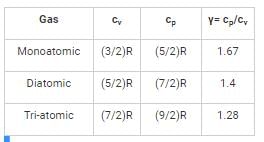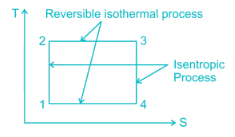IC Engine - 1 - Mechanical Engineering MCQ
20 Questions MCQ Test - IC Engine - 1
Which gas will produce the highest efficiency in an ideal Otto cycle for same compression ratio?
The engine of a car has three cylinder with total displacement of 770 cc. The compression ratio is 8.7. What is the clearance volume of each cylinder?
Which is the wrong assumption for calculation of air standard efficiency?
A four-stroke petrol engine at full load delivers 50 kW. It requires 8.5 kW to rotate it without load at the same speed. Find its mechanical efficiency (in %) at half load.
An ideal gas with heat capacity ratio of 2 is used in an ideal Otto-cycle which operates between minimum and maximum temperatures of 200 K and 1800 K. What is the compression ratio of the cycle for maximum work output?
What is the number of cycles completed per second for a four stroke diesel engine running at 6000 rpm?

























